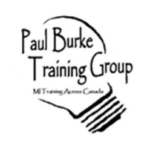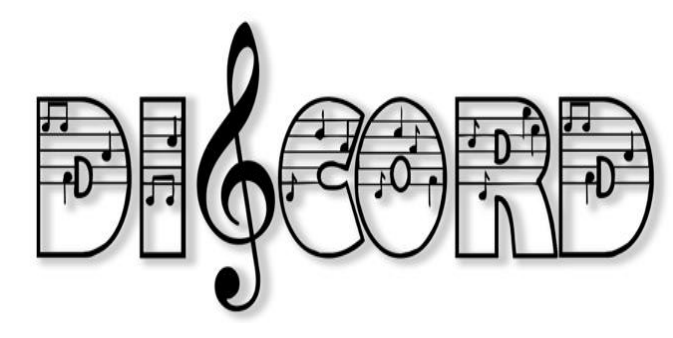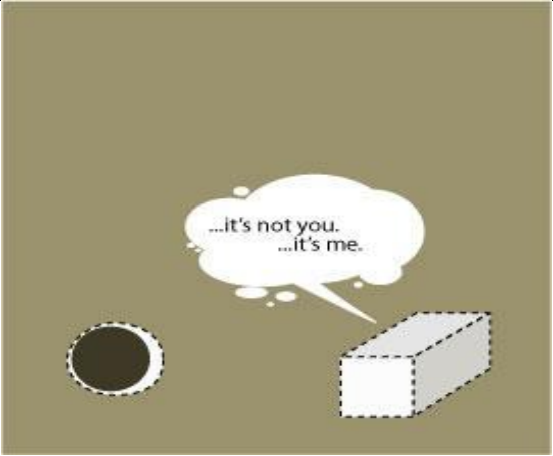
Paul Burke Training Group
Telephone: 1-250-385-6468. Toll-Free: 1-855-MI-TRAINERS
Web: www.paulburketraining.com
E-mail: info@paulburketraining.com
Beyond training: Looking at learning MI in a whole new light!
Thoughts on Improved Practice (TIP) #1705

Sometimes things just don’t match up.
And sometimes, it’s nobody’s fault.
Sometimes, things just get off track.
Sometimes, there just ain’t no harmony.
And – when there ain’t no harmony…
That’s discord!
“Discord is about your relationship with the client”(Miller and Rollnick, MI-3, p. 197)
Dancing With Discord (Part 1)
In the picture above, ask yourself, which sock is at fault for the mismatch? Which one is in the wrong? The simple fact is that in two-person conversations, things sometimes end up in a spot where our current thinking, ideas, goals, and targets are not quite matched with the current thinking, ideas, goals, and targets of our clients. When this kind of a dance occurs between an MI helper and a client, we call it the dance of discord! Discord means that “things are out of synch”. They are “out of whack”. They clash with one another. Trying to decide which sock is at fault is pointless! The bottom line is that when a mismatch occurs, it’s best just to recognize it, and then make a decision to “match up again” – and then look for opportunities to move together – in the same direction!

Think of discord as a musical concept. When several musical instruments are all in tune, and all playing together, from the same music and with the same conductor, there is harmony. When one of the players starts playing from a different place within the music, or when someone begins playing to the beat of a different drummer (so to speak), the disharmony becomes obvious – quite quickly.
That kind of disharmony when applied to MI conversations is called “discord”. When it occurs, disharmony is a simple form of communication that tells you that it’s time to back up a little. Discord means that, as a helper, you are not listening to where, within the music of change, the client is focused. It tells you that you have probably gotten a little bit too far ahead of where your client is focused, and that it’s time to slow down (maybe even back up the bus a little) and get back into harmony with the way your client is seeing things – or about how s/he is feeling about the situation you are discussing.
Discord has a sound. You can hear it. Sometimes it’s more subtle. Other times it’s as clear as a bell. When clients are actively arguing against what you’re saying – that’s discord. It means the two of you are not on the same page. When clients begin to interrupt you, or cut you off within a conversation – that’s discord. It means that the two of you are not on the same wavelength. When clients become annoyed, or even angry, that you’re not reflecting their point of view and you seem to be “siding” against their position – they let you know, through the communication of discord, that you are not currently in a position to be helpful.
Almost always, discord is a signal that you are trying to pound a square peg in a round hole. That’s a major problem in MI – because as you know, MI has almost nothing to do with “pounding”. That’s because you simply can’t pound change into people. When you try, there is friction, and tension – and the pounding or pushing approach takes far more effort than simply re-arranging things and finding a way to create enough harmony that movement in the direction of change can continue.

Some people think of discord as a phenomenon of “resistance”. They suggest that when the sound of discord emerges in a conversation it is because the client is “resisting”. In MI, such thinking is not particularly helpful, partly because it blames the client for a problem that originates in the relationship itself, (not within the client), and partly because it is almost always the MI helper who has the ability to change the dynamics of the conversation in order to get things back in synch. I have never heard a client say “Gee, Paul, I think you are not quite understanding why I am favoring the argument for maintaining the status quo here, and I suspect you are more focused on your own point of view! Paul, I think we are at a mismatch. I guess it would be much more helpful if you could just slow down a little and get your head around my way of understanding this!” Instead, what they usually say is something like “well, maybe that’s your idea, but it’s not mine”. Or, they say “for such a smart guy, I’m amazed that you could be so wrong”, or, “Yah, well, ‘whatever’! I totally disagree – but you’re entitled to your opinion I suppose!”

In MI-3, Miller and Rollnick write that:
“You can experience discord when a client is arguing with you, interrupting you, ignoring you, or discounting you. Note the presence of the word “you” here …. Discord is about you or more precisely about your relationship with the client – signals of discord in your working relationship with the client. In music, as in all relationships, discord requires at least two participants. A single voice cannot yield dissonance [or discord]” (p. 197).
What this means is that MI helpers need to be able to take responsibility for discord when they hear it emerging in change conversations. That is not to say that MI helpers need to take the blame. Rather, it’s helpful to think of responsibility as “Response-Ability”. When discord emerges, MI helpers need to have the response-capability of responding – with ability! I’ll be writing more about developing skills in responding to discord later, but for now, it’s important to think about what is fueling the discord. What
is the source of the mismatch:
- Am I being sensitive enough to this person’s motivational obstacle? (Readiness, Willingness, or Ability?)
- Am I wanting this person to change their behavior more than I am wanting to understand what is getting in the way of their changing?
- Have I engaged with this person’s logic? How much time have I invested in the engaging process?
- Have I prematurely focused on the “problem” (as I see it), before I have helped the person articulate what they see as “the problem”? (The Premature Focus Trap)
- Am I using my experience with past clients to fast-track my understanding of this situation so that I can “prescribe” a change rather than help to give birth to it? (The Expertise Trap)
- Am I open to seeing this situation through the eyes of my client, or am I overly focused on my understanding of what is going on, and on how I think it ought to change? (Expert Trap)
- Am I in such a hurry to see this person change that I have to change him/her, because I have no time to invest in helping him/her to work through the process of change? (Hurry Up Trap)
Until next week …

